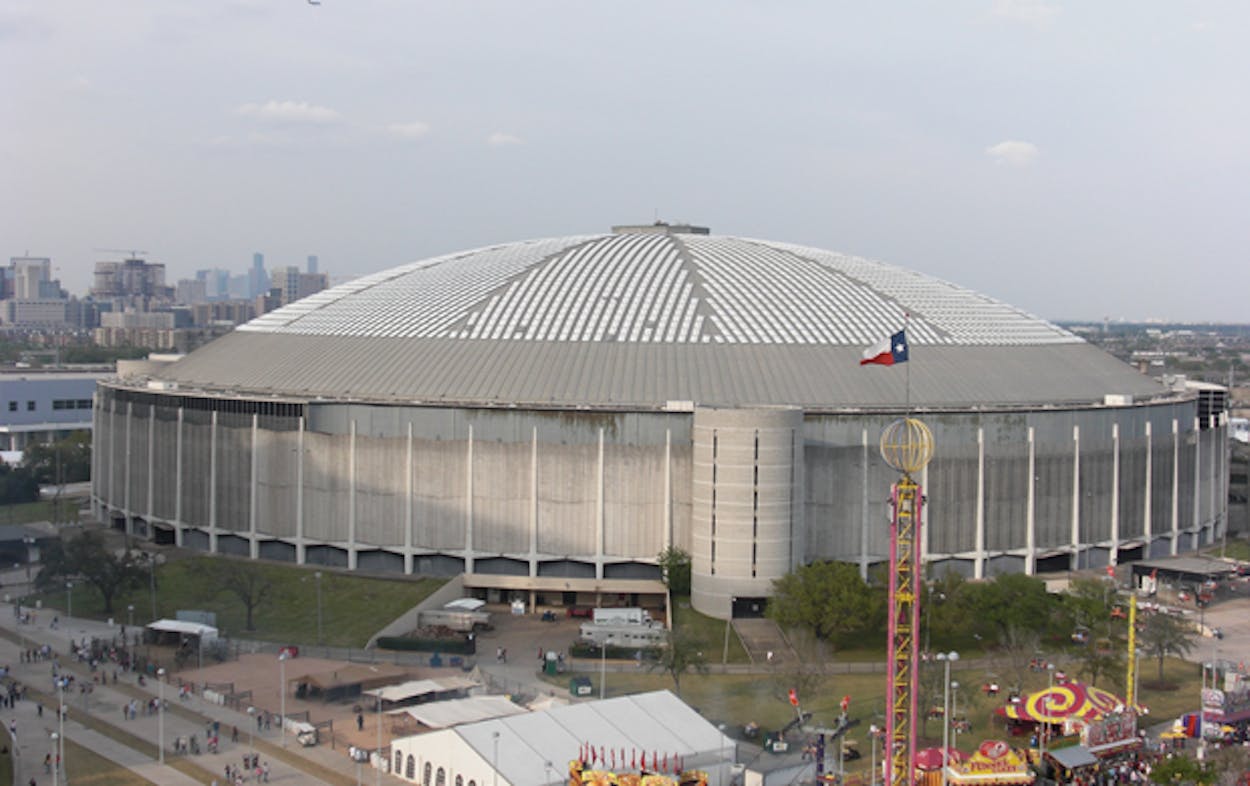Last year, the Houston Astrodome finished number twelve on a list of one hundred sites nominated for recognition in the National Trust for Historic Preservation’s This Place Matters Community Challenge. But today, the landmark building isn’t looking so good.
Houston-area media were given a tour Wednesday of the former “Eighth Wonder in the World,” which, having sat unused for four years, no longer has an occupancy permit (or air conditoning).
The controlled media exposure was prompted by some photographs on the Houston real estate blog Swamplot followed by a March 29 report on KHOU by reporter Courtney Zubowksi.
With such storied sports venues as the original Yankee Stadium, Tiger Stadium, and Comiskey Park all dead and gone, it could certainly happen to the Astrodome. In 2010, Harris County conducted a $50,000 study that suggested four possible futures for the building, all of which would likely require voters to approve a bond issues.
KHOU outlined them as follows:
- Do nothing, which already costs the county $2 million annually in bare-minimum maintenance and debt service (the latter dating back to the 1980s-era renovation).
- Convert the land to greenspace, which could cost up to $84 millon due to the cost of knocking down the building safely. That figure also does not include the existing bond debt, which KHOU says is $40 million.
- Gut the structure and rebuild the inside with a “technology center” and planetarium, as well as a new solar roof on the outside. This would cost an estimated $324 million (including the bonds).
- Implement the so-called “Astrodome Renaissance” building plans, a half-billion dollar public-private complex that would include the features above as well as “everything from an alternative energy center to a movie studio.”
[The] “plans” to renovate it are just … silly. Not silly in the sense of they wouldn’t be great, although we still think the indoor ski slope is, well, funny. But silly in the sense that in these tight times, it’s hard to see the voters — even those voters who profess endless love and nostalgia for the Dome — agreeing to pay the bill needed to do the job.The options range from $2 million a year for doing nothing at all to a half-billion for a tech center, planetarium, movie studio, etc., etc., etc.
The farther the Dome fades into active memories, the easier it becomes to let it go. We know Houston gets a bad rap for letting its history disappear, but these plans for the Dome have “white elephant” written all over them.
We’ll be glad to be proven wrong, but we’d prefer to not be proven extremely expensively correct.
But Connelly’s colleague Craig Hlavaty went on Wednesday’s tour. He came away with the more sentimental perspective, moved by his own childhood recollections in a way that’s hard to put a price on:
I can say that I still want the thing to remain standing, although maybe just as a skeleton. A quick run-through will show you that it’s not beyond repair with enough cash, but it’s probably a lost cause.
We can light it up like a modern art piece, a concrete dinosaur, a monument to the space race and the Bayou City’s crazy resolve, and put a fountain in the middle. Or a beer garden. People love beer.
No one else in the group seemed to have the bug-eyed wonderment that I did, or maybe I am just not so far removed from my days of walking around aimlessly through the stadium during a game and just standing in awe, Coke in hand, at the roof and the Astros — more than likely losing on the field. I wanted to open every door, explore every crevice. I squealed at things that seem mundane, but not in my ten-year old head.
“This is where I sat during my first game!” I yelled in my own head.
I spent the first decade and a half of my life praying to one day play on the field, either as an Oiler or an Astro. When I finally get inside and on the floor, it’s covered in dirt, dust, rancid water, and funky turf. But the smile didn’t leave my face.
Swamplot also highlighted a “comment of the day” that makes the case for preservation
Yes, it’s hard to find a profitable idea for it now, but if we tear it down, we could spend hundreds of years saying ‘Oh, why didn’t we just think to do this?’ Most buildings that we think of now as grand and historic went through a long time when people thought they were worthless. They came close to tearing down Notre Dame cathedral and Grand Central Station . . . and they actually did tear down Penn Station and the Abbey of Cluny. And looking back you say, ‘How was it possible?’ But almost all great buildings go through phases where it’s not obvious why it should remain standing. Better to hold off on the trigger finger.”
Below, KHOU’s original look inside the Astrodome from the end of the March:







